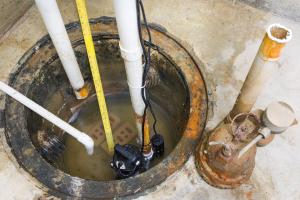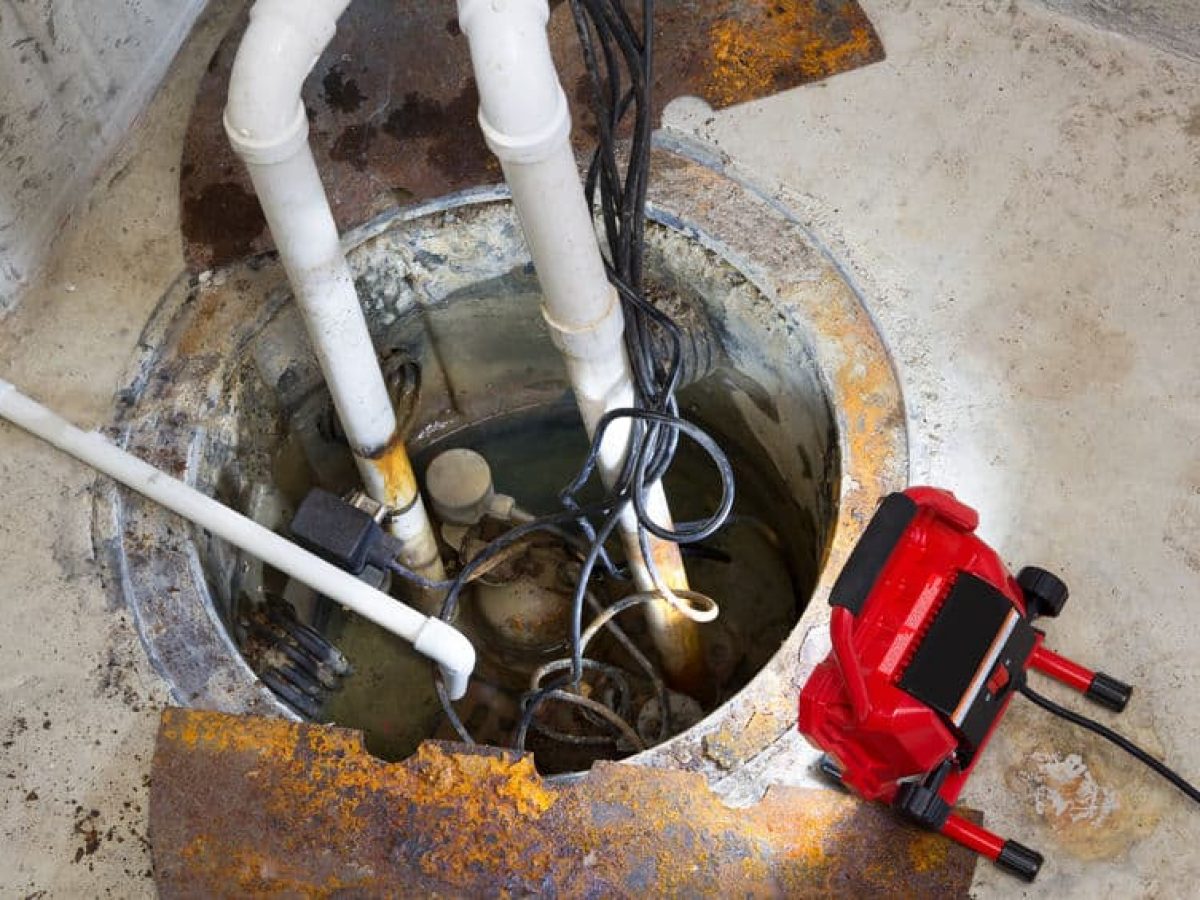Straightforward Tips for Maintaining Your Sump Pump
Straightforward Tips for Maintaining Your Sump Pump
Blog Article
Right here on the next paragraphs you can discover more dependable guidance about Cleaning & Maintenance Tips for Your Home's Sump Pump.

Sump pumps are vital components in many homes, particularly in locations prone to flooding or excessive wetness. They help stop water damages by efficiently removing excess water from cellars or crawl spaces. However, like any other home appliance, sump pumps call for normal maintenance to ensure they function efficiently when required one of the most. Cleaning your sump pump is an important part of its upkeep, and recognizing exactly how to do it effectively can save you from pricey repairs and possible disasters.
Intro
Maintaining a clean sump pump is important for its proper performance and longevity. Overlooking this important job can result in obstructions, breakdowns, and ultimately, water damages to your home. Consequently, learning exactly how to cleanse a sump pump is important for property owners that rely upon these devices to keep their basements completely dry and safeguarded.
Recognizing the Sump Pump
Prior to diving right into the cleaning procedure, it's essential to have a basic understanding of how a sump pump works. Typically mounted in a pit or basin below the basement flooring, a sump pump consists of numerous key components, including a pump, a float switch, and a discharge pipe. When water accumulates in the pit, the float switch triggers the pump, which then pumps the water out with the discharge pipe, far from the structure's structure.
Signs of a Dirty Sump Pump
Understanding when your sump pump requires cleaning is critical for avoiding prospective breakdowns. Some usual indicators that show a filthy sump pump include weird sounds throughout operation, minimized water flow, and noticeable particles in the pit. If you observe any of these signs and symptoms, it's vital to cleanse your sump pump quickly to avoid any kind of more problems.
Planning for Cleansing
Before you start cleansing your sump pump, it's important to take some security precautions. Beginning by turning off the power to the pump to prevent any kind of electrical mishaps. Additionally, use suitable protective gear, such as gloves and goggles, to safeguard yourself from dirt, particles, and potential virus.
Detailed Overview to Cleaning a Sump Pump
Turning off the Power
Begin by detaching the power supply to the sump pump to prevent any kind of mishaps while cleansing.
Getting Rid Of Debris and Dirt
Make use of a container or an inside story to get rid of any type of visible particles, dust, or sediment from the sump pit. Dispose of the debris appropriately to prevent it from clogging the pump or the discharge pipe.
Cleansing the Pump and Drift Switch
As soon as the pit is clear of particles, meticulously eliminate the pump from the pit. Inspect the pump and the float switch for any type of indications of damage or wear. Make use of a soft brush or towel to clean the surfaces and get rid of any kind of gathered crud.
Flushing the System
After cleaning up the pump and float switch, purge the sump pit with tidy water to get rid of any kind of remaining dirt or sediment. This will certainly aid make certain that the pump operates smoothly and successfully.
Checking for Correct Functioning
Before reinstalling the pump, perform a fast test to make certain that the float button triggers the pump appropriately. Pour some water into the sump pit and observe the pump's procedure. If whatever is functioning correctly, you can reassemble the pump and reconnect the power supply.
Maintenance Tips to Maintain Your Sump Pump Clean
Along with regular cleansing, there are numerous upkeep pointers you can comply with to maintain your sump pump in optimum problem:
Verdict
Cleansing your sump pump is an important facet of its upkeep and guarantees that it runs successfully when you need it one of the most. By complying with the steps laid out in this guide and integrating normal maintenance into your routine, you can expand the life expectancy of your sump pump and shield your home from water damage.
6 STEPS ON HOW TO CLEAN A SUMP PUMP PROPERLY
UNDERSTANDING SUMP PUMPS
Your sump pump plays a crucial role in protecting your home by managing and removing excess water. It primarily functions as a “shield”, guarding your basement against the damaging effects of water accumulation. The pump is housed in a sump pit in the lowest part of your basement, and its job is to pump out any water that collects there.
During heavy rainfalls or when snow melts rapidly, water can infiltrate your basement, posing potential risks like flooding, structural damage, and harmful mold growth. Here, the sump pump springs into action, pumping out the intruding water and directing it away from your home.
SAFETY FIRST
Before cleaning, remember to prioritize safety. Disconnect the sump pump from the power source to prevent any accidental electric shocks. Also, wear sturdy gloves to protect your hands from any sharp or dirty components within the pump.
REMOVE THE SUMP PUMP
After ensuring your safety, the next step is to remove the sump pump from its pit. Doing this might require careful maneuvering as you don’t want to damage any pump components. Once removed, clean the sump pit to remove any accumulated debris or sludge.
INSPECT THE PUMP
Inspect the pump for any visible signs of wear or damage. Check the power cord, float switch, and impeller housing. If any components look worn out or damaged, consider replacing them to ensure optimal performance.
CLEAN THE PUMP
Thoroughly clean the pump with warm, soapy water. Make sure to rid it of any dirt, gravel, or other debris that might impede its performance. You can use a toothbrush to clean the small, hard-to-reach parts of the pump.
REINSTALL THE SUMP PUMP
Reinstall the pump into the sump pit Make sure it’s positioned correctly to remove the water effectively Once it’s back in place, reconnect it to the power source TEST THE PUMP
Finally, pour some water into the pit to ensure the pump works correctly. It should start automatically and begin pumping out the water; if it doesn’t, check the power source and the positioning of the pump.
Remember, while cleaning your sump pump is an essential part of home maintenance, hiring a professional plumber for a thorough inspection and cleaning at least once a year is also important. This will ensure that your pump is in optimal condition, ready to protect your home from potential water damage.
BEST PRACTICES FOR CLEANING SUMP PUMP DISCHARGE PIPES
Regular Inspection: Regularly inspect your discharge pipes, especially during heavy rainfall or snowmelt periods. Look for any signs of blockage or damage. Early detection of problems can prevent serious issues down the line. Periodic Cleaning: Over time, sediment and debris can accumulate in the discharge pipes, impeding the flow of water. Regular cleaning helps keep the pipes clear and functioning efficiently. You can use a high-pressure water jet to effectively clean the pipes. Insulation During Winter: In colder climates, discharge pipes can freeze, blocking the outflow of water. Protect your discharge pipes from freezing temperatures by insulating them with foam pipe insulation. This will ensure the sump pump can continue to discharge water even in freezing conditions. Proper Positioning: The discharge pipe should be positioned to direct water away from your home’s foundation. Improper positioning can lead to water seeping back into the basement. Ensure the pipe is long enough and angled correctly. Installation of a Check Valve: A check valve prevents water from flowing back into your sump pit after the pump has pushed it out. Installing a check valve helps maintain the efficiency of your sump pump and reduces the risk of flooding. Minimize Pipe Turns: Every curve or turn in the discharge pipe can decrease the efficiency of water flow. By minimizing turns and bends in your discharge pipe, you can increase the efficiency of your sump pump. https://www.fullspeedplumbing.com/how-to-clean-a-sump-pump-properly9999/

As a keen person who reads about , I was thinking sharing that post was a great idea. Are you aware of somebody else who is truly interested in the subject? Please feel free to promote it. Thanks for going through it.
Call Today Report this page